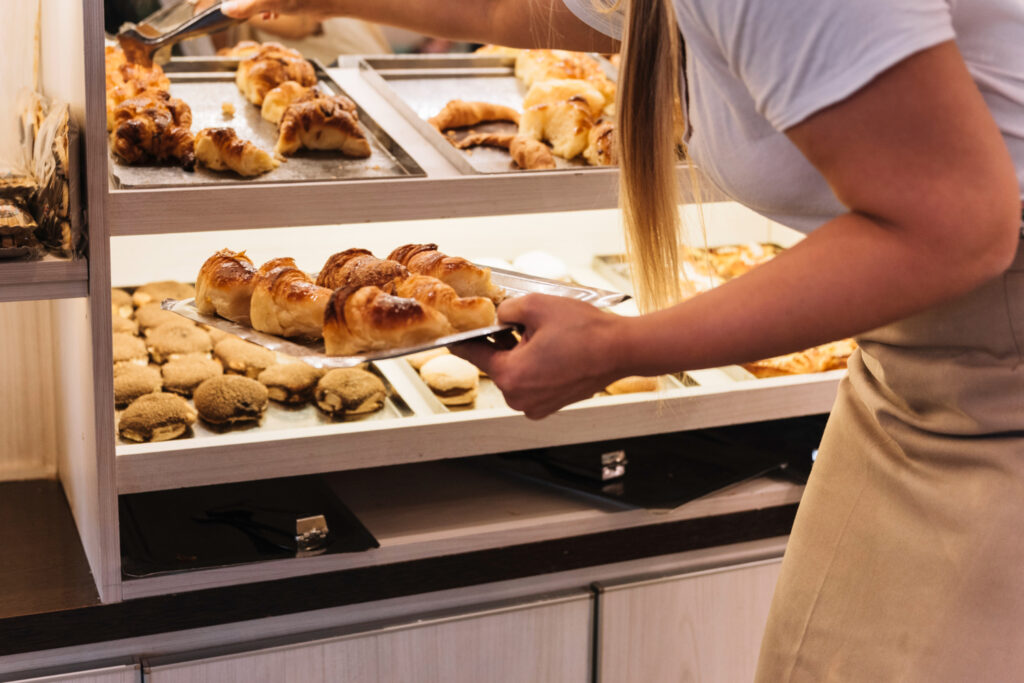
By Bella Zhang April 13, 2025
Decisions about daily operations, customer service, and recipes are common in the hectic world of bakery management. But behind the scenes, financial information, particularly how payments are processed, is crucial to determining long-term profitability. Bakery owners often make mistakes when choosing a payment processing model, especially Interchange Plus pricing.
Even though Interchange Plus pricing is regarded as one of the fairest business models, many bakery owners continue to make critical mistakes that can raise expenses, reduce profit margins, and cause constant annoyance.
Understanding Interchange Plus Pricing in Simple Terms
Before understanding the mistakes, it’s important to understand what Interchange Plus pricing actually is.
In this model, merchants (like bakery owners) are charged two fees on every transaction:
The Interchange fee: Set by card networks like Visa or Mastercard.
The “Plus” markup: Charged by your payment processor as their service fee.
This pricing is transparent compared to bundled or tiered pricing models, where all costs are lumped together. The benefit? You can see exactly what you’re paying and to whom. That said, choosing Interchange Plus still requires careful evaluation. Failing to approach this model with the right knowledge can lead to payment processing mistakes that quietly eat away at your profits.
Mistake 1: Not Comparing Multiple Merchant Accounts
A major mistake bakeries often make in payment processing is opting for the first provider they encounter. In a bid to “simply begin,” owners often agree to quotes without realizing how much they may be overpaying. Charges and rates differ significantly among processors. Certain entities impose excessive markups in addition to the typical interchange, while others incorporate undisclosed fees such as statement charges, monthly minimums, or penalties for PCI compliance.
When choosing the right merchant account, it’s vital to compare offers from at least three different providers. Look beyond just the advertised rate and ask about:
Setup and cancellation fees
Monthly statement or service fees
Equipment leasing or purchase requirements
Contract length and early termination fees
Failure to compare means you might end up with higher costs, long-term contracts, or service terms that don’t suit your bakery’s size or growth plans.

Mistake 2: Ignoring the Importance of Transaction Volume and Size
Every bakery has a unique sales pattern. Some sell high volumes of small-ticket items like cookies and muffins, while others focus on custom cakes or bulk catering. When it comes to Interchange Plus pricing, your average transaction size and daily sales volume play a key role in determining which provider is the best fit. Many small bakeries make the mistake of not considering how their transaction profile affects their costs. For instance, smaller transactions are often hit with higher relative fees because many interchange rates include a flat per-transaction fee.
Suppose you process a $3 muffin transaction. Even a $0.25 flat fee adds up quickly; in contrast, the percentage-based fee has less of an effect on a $30 custom cake sale. The best Interchange Plus plan for reducing bakery business expenses over time can be determined by looking at your average order size and monthly sales total. Lower per-transaction fees from a processor that specializes in small-ticket transactions could result in monthly savings of a substantial amount.
Mistake 3: Overlooking Hidden Fees Beyond the Interchange
Interchange Plus pricing is often praised for its transparency; but that doesn’t mean all fees are obvious. Some processors add charges beyond the base markup that can be easy to overlook.
Common hidden fees include:
Batch fees for daily settlements
Statement delivery fees (paper or digital)
PCI compliance non-validation fees
Monthly minimums, where you pay the difference if your fees don’t meet a set amount
Customer service or chargeback support fees
These costs may not seem huge individually, but they add up fast; especially for a small bakery trying to avoid high transaction fees.
When evaluating a contract, always ask for a complete fee disclosure. Get it in writing. And better yet, read your monthly statements to make sure no surprise charges slip in later. Regularly reviewing your statements also helps you identify suspicious charges or performance issues.
Mistake 4: Failing to Consider Equipment Compatibility
Another common oversight is rushing into a merchant agreement without checking whether your existing hardware is compatible with the new payment processor. This can lead to unexpected expenses on new terminals, software subscriptions, or integrations; often under restrictive contracts.
Make sure your modern point-of-sale system works seamlessly with the payment processor’s system if you’re using one designed specifically for bakeries, such as one that keeps track of inventory, handles recipes, and takes tips. Avoid making compatibility assumptions. Inquire specifically about the smooth operation of your mobile card readers, online ordering software, and point-of-sale system. If they don’t, you might have to purchase new equipment or lose productivity, both of which increase the expenses of running a bakery.
Choosing the right merchant account also means choosing the right tech partner. Ideally, you should work with a provider who offers flexible integration options, especially if you plan to expand online or adopt curbside pickup features in the future.
Mistake 5: Not Negotiating the Markup Fee
In Interchange Plus pricing, the processor’s profit lies in the “plus” portion. That markup is often negotiable; especially if your bakery processes a decent amount of volume. Many small business owners don’t realize this and accept the default rates without question. But even a small difference; say, 0.20% instead of 0.35%; can make a big impact over hundreds of monthly transactions. Before you sign a contract, ask if the markup rate is flexible based on your volume. Come to the table with numbers: how many transactions you process per day, your average ticket size, and your monthly total volume. A little negotiation can go a long way in helping you avoid high transaction fees. Some processors are more willing to negotiate than others, so this is another reason why it pays to shop around and know your numbers.
Mistake 6: Choosing Based on Rates Alone
It’s easy to focus only on rates when selecting a processor; but that’s short-sighted. Support, reliability, ease of use, and long-term service matter just as much; especially in a customer-facing business like a bakery.
Imagine that in the morning rush, your card reader fails. Can you get in touch with support right away? Do they provide quick turnaround for replacements or local representatives? What happens if a client disputes a charge? Is there anything the processor can do to combat chargebacks? Too often, bakeries are forced into low-cost agreements with subpar customer service, which causes operational difficulties that outweigh the meager savings. Think about the overall value provided rather than just the lowest price when selecting the best merchant account. Examine reviews, get referrals from other small business owners, and find out how quickly support is available.
Mistake 7: Misunderstanding Interchange Categories
Not all credit card transactions are treated equally. Different card types (debit, credit, rewards, corporate) come with different interchange fees. If your bakery accepts a lot of corporate cards or premium rewards cards; common for large catering orders or holiday gift purchases; your costs may spike without warning. One payment processing mistake is assuming the base interchange rate will stay the same across all cards. It won’t.
Educate yourself on the types of cards your customers typically use. Ask your processor to provide historical data or run a test analysis. This insight can help you anticipate fluctuations in fees and build them into your pricing model without shocking your bottom line.
Mistake 8: Not Factoring Fees into Product Pricing
Too often, bakeries overlook transaction fees when setting menu prices. While each swipe may cost only a small percentage, those pennies add up; especially if you sell high-volume, low-margin products. If your cupcakes sell for $3 and your processing fees take $0.20 per sale, that’s a significant cut. Add in packaging, labor, and ingredient costs, and your profit shrinks fast.
Incorporating your estimated payment processing costs into your product pricing is a smart way to maintain profitability. Avoiding high transaction fees that gradually reduce your earnings is made easier with this practice. Not only does transparent pricing safeguard your earnings, but it also positions your company to manage other operational expenses without taking shortcuts elsewhere.
Mistake 9: Signing Long-Term Contracts Without Review
Some payment processors require contracts that stretch 1–3 years; or longer. These often include early termination fees and strict auto-renewal clauses. Signing such agreements without fully reading the fine print is a risky move for any bakery. If your needs change or you find a better offer, breaking the contract could cost you hundreds or even thousands of dollars. This is especially frustrating if you discover hidden fees, poor support, or tech limitations after the fact. Always read contracts thoroughly. If the processor offers a month-to-month agreement with no penalties, that’s often a better choice; especially for small or growing bakeries. When choosing the right merchant account, flexibility is just as valuable as cost savings. You want a partner who evolves with your business; not one who locks you in with fine print.

Mistake 10: Failing to Monitor Monthly Statements
Once the system is in place, many bakery owners stop paying attention to their monthly processing statements. That’s a mistake. Without regular reviews, it’s easy to miss pricing changes, new fees, or chargeback activity. Processors sometimes raise rates over time, especially if your contract allows it. Some might even switch your account from Interchange Plus to a different model without proper explanation. Make it a habit to review your statements monthly. Compare your effective rate (total fees divided by total processed volume) to your expected rate. This quick check helps you catch discrepancies and ensures you’re not overpaying.
Keeping an eye on your statements is one of the simplest ways to reduce bakery business costs without cutting quality or labor.
Conclusion
Interchange Plus pricing can be a great fit for bakeries; but only if it’s chosen and managed correctly. Like any part of your business, your payment processing system deserves regular review, thoughtful selection, and clear understanding. By avoiding these common payment processing mistakes, you can keep your costs in check, improve your profit margins, and create a smoother experience for both staff and customers.
Every step you take to safeguard your bottom line, from comparing providers to negotiating rates and keeping an eye on statements, helps. Additionally, these financial practices will guarantee that your bakery is built on solid, economical foundations as it expands. Since every dollar matters in the small business world, making wise decisions now will pay off later in the form of sweeter rewards when it comes to selecting the best merchant account.